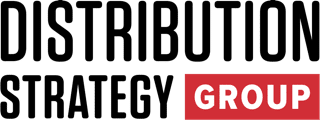U.S. business confidence has dropped to its lowest level since the pandemic-era lows of late 2020, according to new research from Principal. The Principal Financial Well-Being Index fell sharply to 6.02 out of 10 in the first half of 2025, down from 7.8 in November 2024. For small and midsize businesses (SMBs), the backbone of America’s distribution economy, the decline is even more pronounced, with confidence falling from 7.38 to 5.69, a record single-period drop.
The index, based on a national survey of employers, reflects rising anxiety about inflation, economic instability, and a recession. Just 16% of employers believe the U.S. economy is currently growing, compared to 40% in mid-2024. Meanwhile, only 36% of SMBs are optimistic about the year ahead—down from 59% last fall—marking a major shift in sentiment.
What This Means for Distributors
For wholesale distributors, this deepening uncertainty presents both a challenge and an inflection point. Distributors sit at the crossroads of supply chains and customer demand, and softening business confidence on Main Street typically signals reduced order volumes, postponed capital investments, and more conservative inventory planning.
The decline in SMB confidence is particularly consequential. These companies are often distributors’ core customers, including contractors, small retailers, healthcare offices, auto shops, restaurants, and others. When these businesses lose confidence, they delay upgrades, cut back on materials, and reexamine vendor relationships.
Yet despite this downturn in sentiment, there are no signs of wholesale contraction. According to Principal’s survey, 90% of employers are either maintaining or growing headcount—a signal that many businesses are not panicking, but rather recalibrating. For distributors, this means customers are still operating, still buying, and still expecting service—even as they scrutinize spending more closely.
“Uncertainty is pulling business owners out of a growth mindset and into stability mode,” said Amy Friedrich, president of benefits and protection at Principal. “What this market craves is certainty. Clear, sensible moves on tax and trade policy will give Main Street the confidence to move forward.”
A Familiar Playbook, New Priorities
Businesses are again emphasizing operational efficiency—a move distributors are familiar with. One in five companies surveyed are cutting costs without cutting staff, while others are reorganizing or fine-tuning hiring. That mirrors trends in the distribution space, where firms are managing tighter margins by streamlining warehouse operations, leveraging automation, and optimizing delivery networks.
But the challenges are significant. Rising healthcare costs (cited by 58% of employers), increasing benefit costs (51%), and near-universal supply chain disruptions (95%) all weigh heavily on decision-making. For distributors, these pressures show up in delayed shipments, lower fill rates, and harder-to-forecast demand patterns.
The takeaway: while the U.S. distribution sector isn’t facing a collapse in demand, it is operating in a more cautious and less forgiving environment. Flexibility, transparency, and clear value proposition will be key as buyers tighten budgets but still expect reliability. Distributors that invest in customer relationships, digital capabilities, and supply chain resilience will be better positioned to navigate this turbulent period and seize opportunities when confidence eventually rebounds, according to Principal.
Don’t miss any content from Distribution Strategy Group. Join our list.


